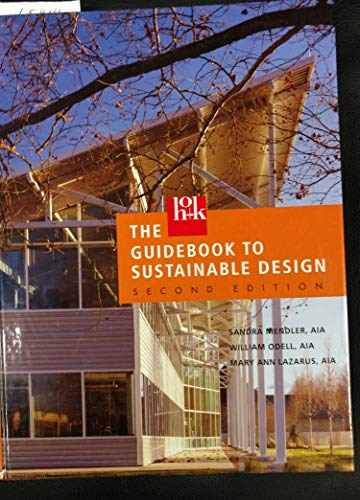
If you've ever dreamt of designing breathtaking buildings, you might wonder—does pursuing architecture lead to a lucrative paycheck? While the answer isn't a simple yes or no, here's a closer look at what impacts an architect's earning potential. To delve deeper into whether pursuing architecture as a career is truly worth it, check out this thoughtful analysis: Is Architecture Worth It?.

Getting your foot in the architectural world can feel like a financial rollercoaster. Fresh graduates with a Master's degree might start as intern architects earning as low as $42,000 per year. It’s not glamorous, especially considering the time and cost it takes to earn the degree, but the salary ceiling rises as you gain experience and grow in your role.
For instance, an entry-level intern (Intern 1) earns about $41,500, while those who climb to the CEO position in a firm can pull in a hefty $133,600. It’s a long road, but the potential is there for those willing to weather the early bumps. For an overview of architecture career statistics, visit the U.S. Bureau of Labor Statistics' architects section.

Your location can make or break your paycheck in architecture. Urban centers like New York City and San Francisco often offer higher salaries to account for their high cost of living. For example, project managers in the Pacific Region make an average of $83,500 annually, compared to $78,300 in the East North Central Region.
Curious how salary stacks up across various roles and firm sizes? See the comparison below:
| Role | Small Firm (Revenue: $250,000-$999,999) | Large Firm (Revenue: Over $15 million) |
|---|---|---|
| Intern 3 | $46,300 | $54,200 |
| Project Manager | $78,300 | $83,500 |
| CEO/President | $133,600 | $133,600 |
While the national median salary for architects hovers around $78,470, it's worth noting that the bottom 10% earn about $47,480. This variation demonstrates just how much factors like specialization, market demand, and firm performance can influence wages.
Comparing professions, attorneys have a much higher median income of $119,250—but architects might point out they prioritize passion for design over courtroom tenacity.
The short answer? Absolutely. Architects can boost their income by working on larger or more successful projects or by carving out niches in high-demand areas like sustainable design or metaverse architecture. Emerging opportunities like NFT design even hint at lucrative alternatives to traditional architectural practices.
Continuous professional development, staying up-to-date with new trends, and pursuing certifications can also bolster earning potential. Tools and resources from organizations like The American Institute of Architects (AIA) help architects identify career development opportunities to maximize their earnings.
Architects often enjoy a significant degree of flexibility in their careers, with options to work remotely, freelance, or even spearhead their own firms. While the financial highs can vary, many find satisfaction in a career that blends creativity and flexibility.
So, what do you think? Does architecture balance passion with profit? Share your thoughts or personal experiences in the comments!

Embark on a fascinating journey through architectural history with "Architecture for Dummies." This guide simplifies complex concepts, from the iconic Great Pyramids to the modern Guggenheim Bilbao. Perfect for novices and enthusiasts alike, it explores styles, structures, and the stories they tell. Whether you're dreaming of designing or simply curious, this book is your gateway to understanding architecture's impact on our world.

Explore innovative strategies and practical insights for creating environmentally responsible buildings with "The Guidebook to Sustainable Design: Second Edition." This comprehensive resource offers architects, designers, and building professionals essential guidance on sustainable practices. Uncover techniques to minimize environmental impact while maximizing efficiency and design excellence. Ideal for those committed to integrating sustainability into their projects.

Explore the timeless wisdom of Renaissance architecture with Andrea Palladio's "The Four Books of Architecture." This classic work, featuring a new introduction by Adolf K. Placzek, offers profound insights into architectural principles and design. Perfect for architects, historians, and enthusiasts alike, this book serves as a foundational text that continues to inspire and guide the art of building.
Architects can earn a substantial salary depending on their experience and location. The median annual wage for architects was approximately $80,750. While the top earners received upwards of $105,600, the lower quarter were paid around $62,600. This indicates that salary potential is significant, particularly as architects progress in their careers.
An entry-level architect in the United States can expect to earn an average annual salary of about $62,076. This figure can fluctuate widely based on location, employer, and specific job roles, ranging from as low as $35,000 to as high as $76,993 per year.
Architects may enhance their salary potential by gaining specialized skills, pursuing advanced degrees, or obtaining certifications like LEED accreditation. Experience in high-demand sectors, geographical relocation to bustling urban centers, and working on larger, more complex projects can also lead to increased earnings.
Architects often face challenges such as tight project deadlines, client expectations, regulatory compliance, and staying abreast of new technologies and software. Balancing creativity with practical limitations and managing budgets also pose significant hurdles in daily operations.
As we wrap up our exploration of the financial realities of life in architecture, it's clear that while the path may not always lead to riches, the fulfillment of crafting structures that leave a lasting mark just might make the journey worthwhile. If you've found this dive into the architectural world intriguing and are hungry for more insights, why not follow us for a stream of creativity and revelations? You can find a collection of inspiring designs on our Pinterest, peeks into the daily life of architects on Instagram, and join in the conversation on X (formerly Twitter). Plus, if you'd like to keep up with our latest posts and connect with fellow enthusiasts, be sure to like our page on Facebook. We’d love to hear your thoughts on the topic!
